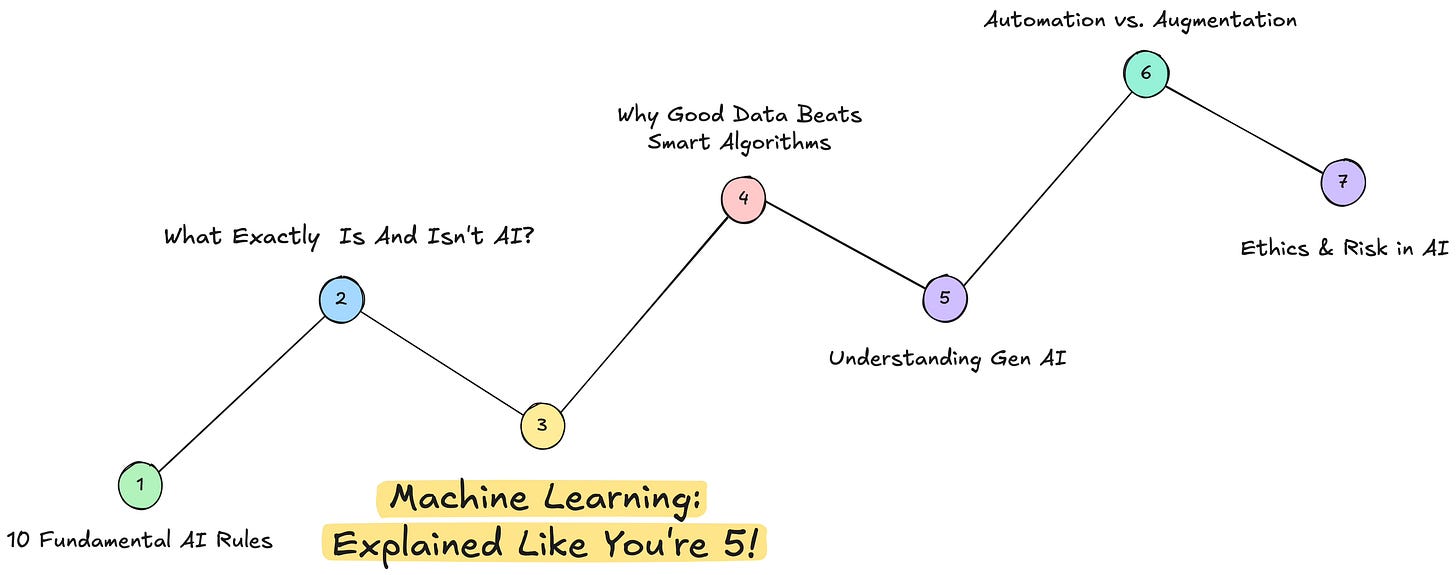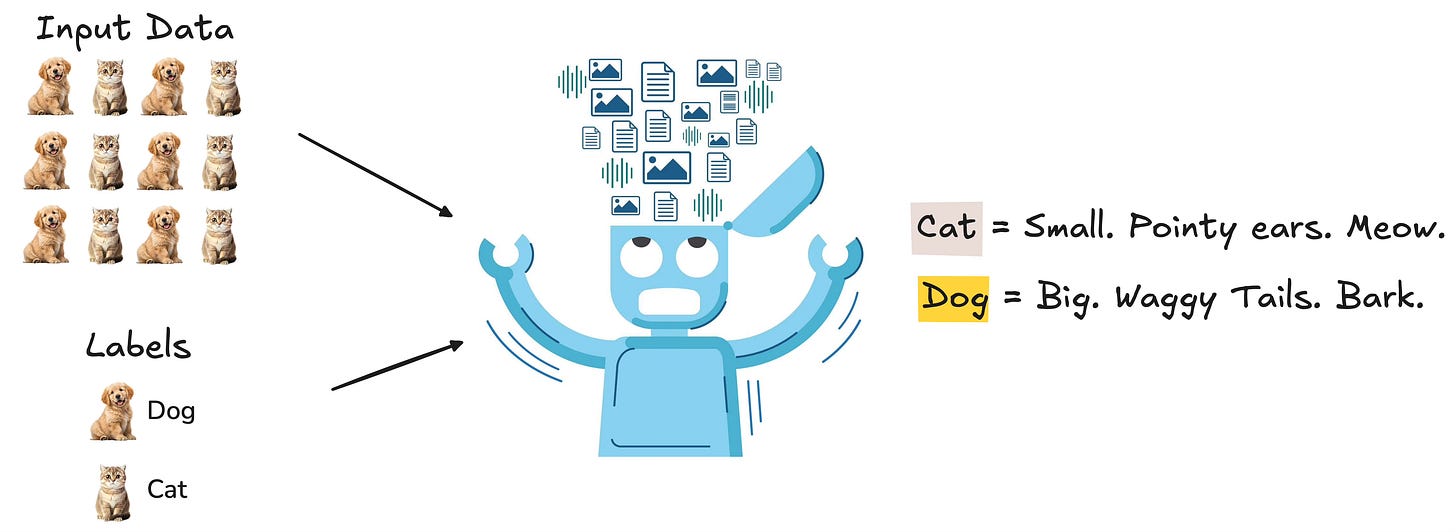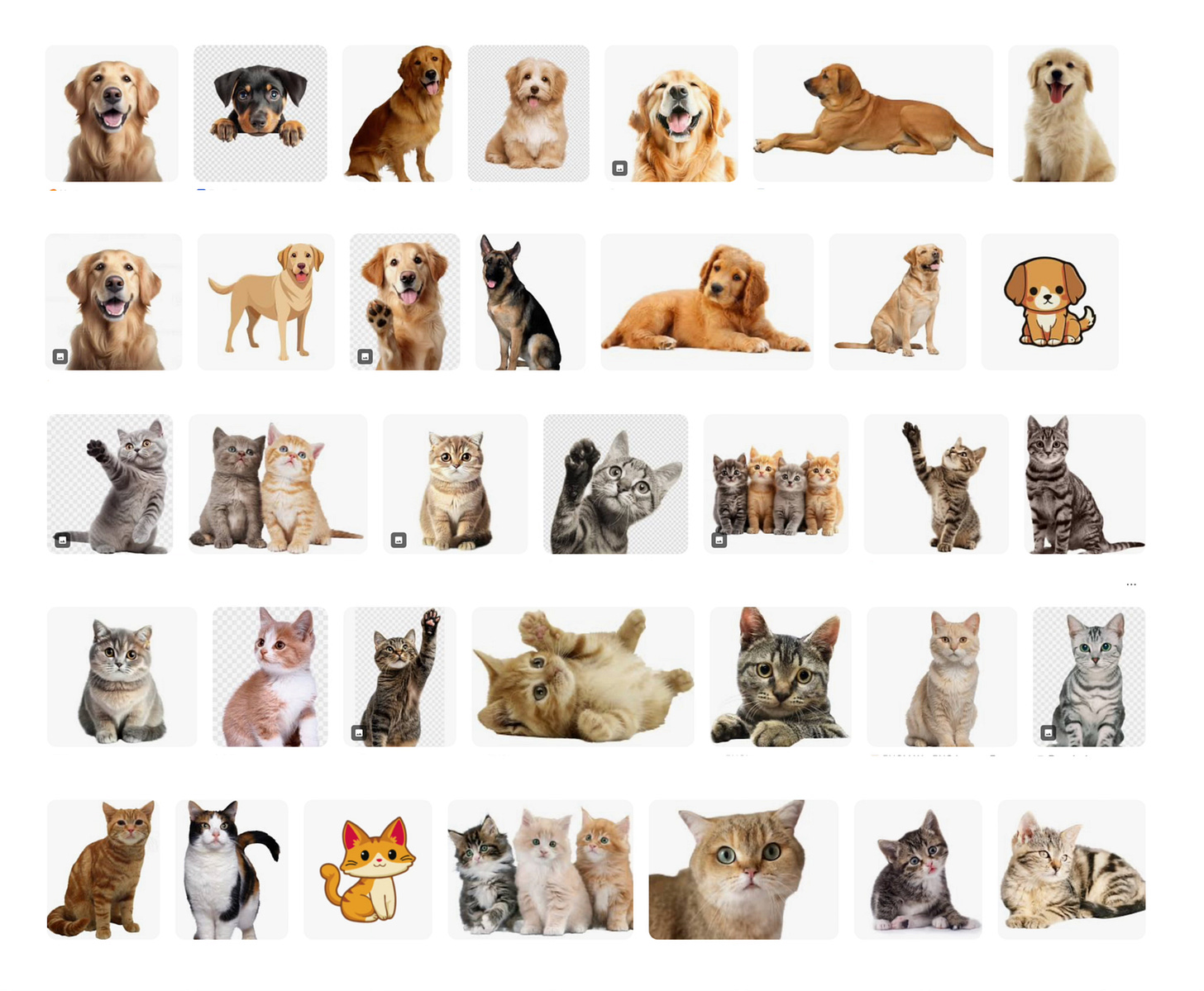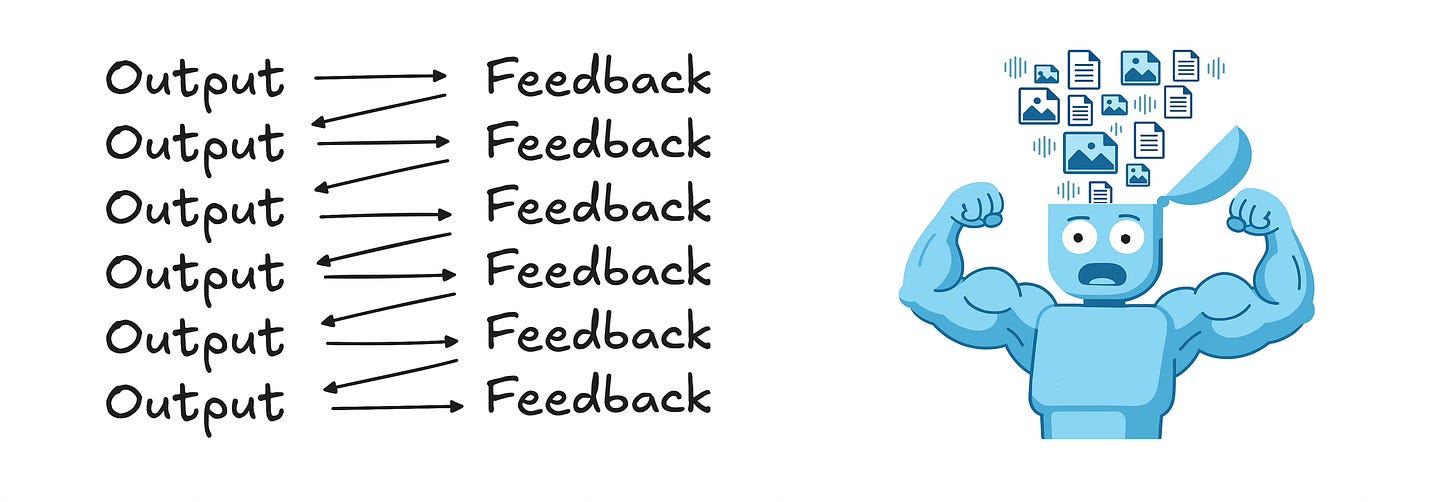Machine Learning: Explained Like You're 5
Finally understand ML without overloading your brain!
Hello 👋
This is the 3rd installment of my 7-day ‘AI Fundamentals Playbook’ series.
If you haven’t checked out the first two, click here!
Imagine the you were learning to ride.
At first, you wobble. Then, you fall.
But you keep trying.
And soon, you get better.
Now you can ride fast and have fun!
Machine Learning is kinda like that—but for computers.
It sounds tricky, but it’s really about teaching computers to get better by showing them lots of examples.
In this newsletter, I’ll explain to you Machine Learning in the easiest way.
Let’s go!
What is Machine Learning?
Machine Learning (or ML) is a way of teaching computers to learn from examples.
Instead of telling the computer what to do step-by-step, we show it many examples.
The computer looks at the examples
Finds patterns
And then figures things out by itself.
Example: Think about learning the difference between a cat and a dog.
Here’s how it went:
You saw many cats and dogs.
You noticed, “Cats are smaller, have pointy ears, and meow.
Dogs are bigger, bark, and wag their tails.
A computer does the same!
We give it lots of pictures of cats and dogs.
It starts to learn the differences by spotting patterns.
Step-by-Step
Step 1: Learning from Examples
First, the computer looks at many examples.
If you show it 1000 pictures of cats and dogs, it will study them carefully.
Each picture tells the computer, “This is a cat” or “This is a dog.”
Just like when you were learning to tell cats and dogs apart, the computer needs lots of examples to learn.
It doesn't really understand what a cat is.
But it notices things like "most cats have pointy ears" or "dogs often have bigger noses."
Step 2: Finding Patterns
After seeing many pictures, the computer starts spotting patterns.
For example:
Cats often have small noses.
Dogs often have floppy ears.
Cats’ whiskers are long.
Dogs may have collars.
The computer makes notes of these patterns.
It remembers them to help make guesses later.
It’s a bit like how you notice that chocolate bars often come in shiny wrappers. You see it so often that your brain remembers it!
Step 3: Making Predictions
Now comes the fun part!
Imagine you show the computer a brand-new picture.
It has never seen this one before.
The computer looks at the picture and thinks, “Hmm... this has pointy ears and long whiskers. It looks like the pictures labeled 'cat'.
So, I think it’s a cat!”
That’s called making a prediction.
It’s not guessing randomly.
It's using what it learned from the old pictures to make a smart guess about the new picture.
Step 4: Getting Smarter Over Time
At first, the computer might make mistakes.
Maybe it thinks a small dog is a cat because they both have pointy ears.
But every time it makes a mistake and someone corrects it, the computer learns.
It updates what it knows.
It’s just like you!
When you first rode a bike, you might have fallen.
But you learned. You got better. Now you zoom around!
The more the computer practices, the better it gets at making predictions.
That’s why we say Machine Learning is about "learning from experience."
Conclusion
Now you know what Machine Learning is!
It’s simply:
Showing computers lots of examples.
Helping them spot patterns.
Letting them make smart guesses.
Helping them learn from mistakes and get better.
Machine Learning is all around you:
When Netflix shows you movies you might like.
When Alexa answers your questions.
When self-driving cars find the best way home.
Machine Learning helps computers become smart helpers.
But remember — they need good examples and lots of practice.
(Just like us!)
Want to try training a machine yourself?
You can! There are fun tools like Google’s Teachable Machine.
It lets you teach a computer to recognize your face, your voice, or even your dance moves!







